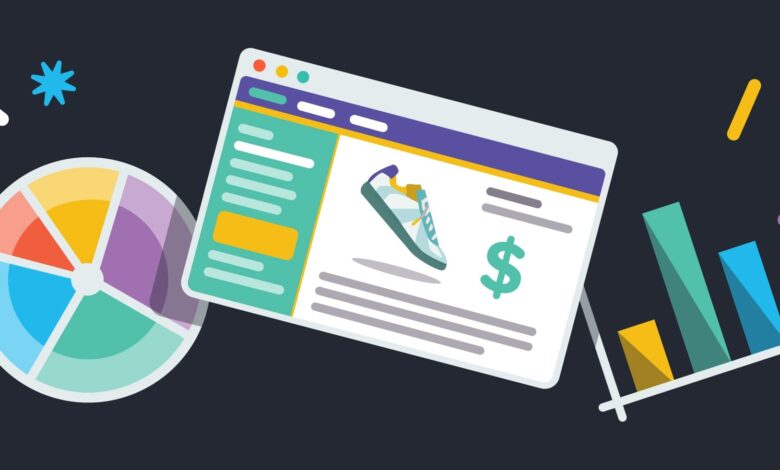From Traffic to Transactions: The Ultimate Guide to Increasing Sales Through Conversion Optimization

Driving traffic to your website is only the first step in achieving online success. The real challenge is converting that traffic into paying customers. Conversion Rate Optimization (CRO) is the key to unlocking your website’s full revenue potential. By leveraging data-driven strategies, A/B testing, and user behavior insights, you can transform casual visitors into loyal buyers.
In this ultimate guide, we’ll explore how businesses can Expert Conversion Rate Optimization by identifying conversion barriers, optimizing the user experience, and implementing high-impact changes that lead to more transactions.
Understanding Conversion Rate Optimization (CRO)
CRO is the systematic process of increasing the percentage of website visitors who take a desired action—whether that’s making a purchase, signing up for a newsletter, or filling out a contact form. This is achieved by analyzing user behavior, testing different design elements, and making data-backed adjustments to improve conversion rates.
Why CRO Matters for Sales Growth
- Maximizes ROI on Marketing Spend: Instead of spending more on ads to drive traffic, CRO helps you get more value from your existing visitors.
- Enhances User Experience: A well-optimized website improves navigation, speed, and clarity, making it easier for customers to complete a purchase.
- Boosts Revenue Without Increasing Costs: By improving conversion rates, businesses can increase sales without additional ad spend or marketing costs.
- Reduces Customer Drop-off: CRO identifies pain points in the buying journey and removes obstacles that cause visitors to abandon their purchases.
Key Strategies for Boosting Sales Through CRO
1. Identify and Eliminate Conversion Barriers
Understanding what prevents visitors from converting is the first step in CRO. Common barriers include confusing navigation, slow page load times, unclear messaging, and complicated checkout processes.
How to Fix These Issues:
- Use heatmaps and session recordings to see where users struggle.
- Conduct user surveys to gather feedback on website usability.
- Optimize site speed and mobile responsiveness to prevent frustration.
- Simplify the checkout process to reduce cart abandonment rates.
2. A/B Testing: The Secret to Continuous Improvement
A/B testing (or split testing) compares two versions of a webpage to see which one performs better. This ensures that any changes you make are backed by real user data rather than guesswork.
What to Test:
- Headlines and Call-to-Action (CTA) Buttons: Test different wording, colors, and placements.
- Product Descriptions & Pricing Displays: See if changing the way prices and benefits are presented impacts conversions.
- Landing Page Layouts: Experiment with different designs to find the most effective one.
- Trust Signals: Try adding customer reviews, security badges, and guarantees.
3. Improve the Checkout Experience
A complicated or lengthy checkout process can lead to high cart abandonment rates. Streamlining the process helps customers complete their purchases without frustration.
Checkout Optimization Tips:
- Enable guest checkout to reduce friction.
- Offer multiple payment options, including digital wallets.
- Display clear progress indicators so users know how many steps are left.
- Use exit-intent popups to remind users about their abandoned carts and offer incentives.
4. Personalization: Show the Right Offer to the Right Customer
Personalized experiences significantly improve conversion rates by tailoring content and offers based on user behavior, demographics, and preferences.
How to Personalize Your Website:
- Use AI-driven product recommendations based on browsing history.
- Display dynamic CTAs that adjust based on user intent.
- Offer location-based discounts or promotions.
- Send targeted follow-up emails with personalized offers.
5. Leverage Data Analytics to Drive Sales
Data is at the core of any successful CRO strategy. Tracking key metrics helps businesses make informed decisions about which elements to optimize.
Important Metrics to Track:
- Conversion Rate: The percentage of visitors who complete a purchase.
- Bounce Rate: How many users leave after viewing only one page.
- Cart Abandonment Rate: The percentage of users who add items to their cart but don’t check out.
- Average Order Value (AOV): How much customers spend per transaction.
Using tools like Google Analytics, heatmaps, and funnel analysis, businesses can track performance and uncover opportunities for improvement.
How Our CRO Services Guarantee a 30% Sales Lift
For businesses serious about increasing sales, our HITLIST CRO Audit and ITERATE A/B Testing Program offer proven, data-driven conversion optimization strategies.
HITLIST CRO Audit: Identify Quick Wins
- Detailed 60-80 page report with actionable insights.
- Expert analysis & user behavior insights to pinpoint conversion bottlenecks.
- High-impact test recommendations to boost conversions quickly.
- Google Analytics & user testing review for in-depth data analysis.
Clients regularly see a 12-20% increase in conversion rates after implementing recommendations.
ITERATE A/B Testing Program: Continuous Sales Growth
- Guaranteed 30% conversion rate lift in 90 days.
- Multiple testing cycles to refine and improve key elements.
- Full-service optimization including design, development, and analysis.
- Seamless Google Analytics and Tag Manager integration to track results accurately.
Conclusion: Transform Your Website into a Sales Machine
If you’re ready to turn website traffic into real transactions, CRO is the key to sustainable sales growth. By analyzing user behavior, eliminating conversion barriers, and continuously testing optimizations, you can increase revenue without increasing ad spend.




